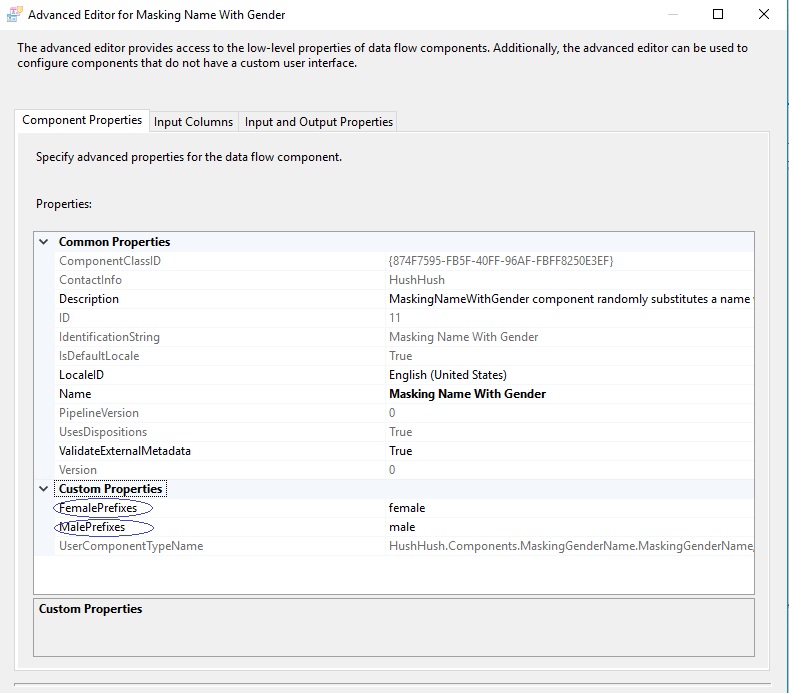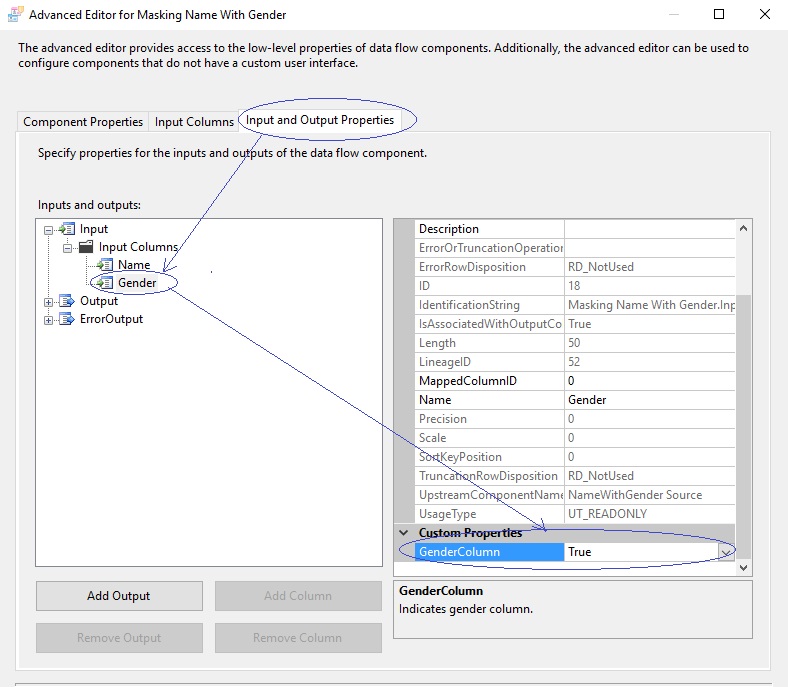e
q
u
e
s
t
a
d
e
m
o < back
Data Masking Components: Names with Gender
{TOC}
Names with Gender
API Reference, CLR Reference (links)
Purpose
The purpose of the component is to randomly mask first names in accordance with their genders with the realistic but different data.
Algorithm
Description
 The Masking Names with Gender component expects First Name as an input and produces First Name as an output. It also identifies whether the name is Female, Male, or Unisex and maps names according to existing popular name mappings. If however the name is not among those that have component’s mapping, it will map into the unisex name.
There is an option that will override default behavior and allow one to be more precise in gender definition. One has an option of providing a list of the possible gender identifiers, be it values of the gender (male/female, m/f) or honorifics (miss, Mr., etc.) with the gender meaning – and the name will be mapped accordingly.
The Masking Names with Gender component expects First Name as an input and produces First Name as an output. It also identifies whether the name is Female, Male, or Unisex and maps names according to existing popular name mappings. If however the name is not among those that have component’s mapping, it will map into the unisex name.
There is an option that will override default behavior and allow one to be more precise in gender definition. One has an option of providing a list of the possible gender identifiers, be it values of the gender (male/female, m/f) or honorifics (miss, Mr., etc.) with the gender meaning – and the name will be mapped accordingly.
|
API Reference, CLR Reference (links)
Usage Instructions:
| 1. Configure a source that contains the column with alphabetical and numeric characters. The data in the column may also include any other character that will be treated as a separator. |

|
| 2. Drag and Drop Names with Gender masking component, connect the source and the generic alpha numeric component with the source's precedence constraint: |

|
| 3. Now, the precedence constraint (the blue arrow) passes proper meta-data to the Names with Gender component. If you click on constraint, you will see: |

|
| 4. Now that the metadata for the Names with Gender exists, and values are passed into the data masking component, please open the component editor: |

|
| 4.1. One has an option of providing a list of the possible gender identifiers, be it values of the gender (male/female, m/f) or honorifics with the gender meaning –and the name will be mapped accordingly: |

|
| 5. In the second tab, there are input columns. Please check-mark only one column, the one that you will be masking with Names with Gender algorithm: |

|
| 5.1. There you can determine the list of values in the column that defines the name gender: |

|
| 6. This will create an extra column with the prefix “Masked_”. |

|
| 7. Create a connection manager for the destination and configure source component for the destination. In the connection manager, in the tab “Mappings”, specify that you want newly created Field_Masked to be a field replacing the original value. For that, just click on the available input columns, choose the masked value, and map to the “Available Destination Columns” |

|
| 8. Now, all the configurations are complete for the valid values. You can run the package with the Names with Gender Data Masking component, and see the results of data masking: |

|
Error Handling
| 9. If, however, there are invalid values in the package's source, one would need to configure error handling. Invalid values are those that are not conforming to the rules of the entity. To handle invalid values, each data masking component has error handling precedence constraint. One needs to create error destination connection and connect red arrow (error handling constraint) with this destination. As the connection is made, one needs to configure the state of failure: “Fail”,”Ignore” or “Redirect”. |

|
|
10. It is recommended that one re-directs the output into the error destination, so that later one be able to analyze and process data for quality purposes. |

|
| 11. It is our suggestion that with Names with Gender component one should not process erroneous data without further analysis at all. |

|
